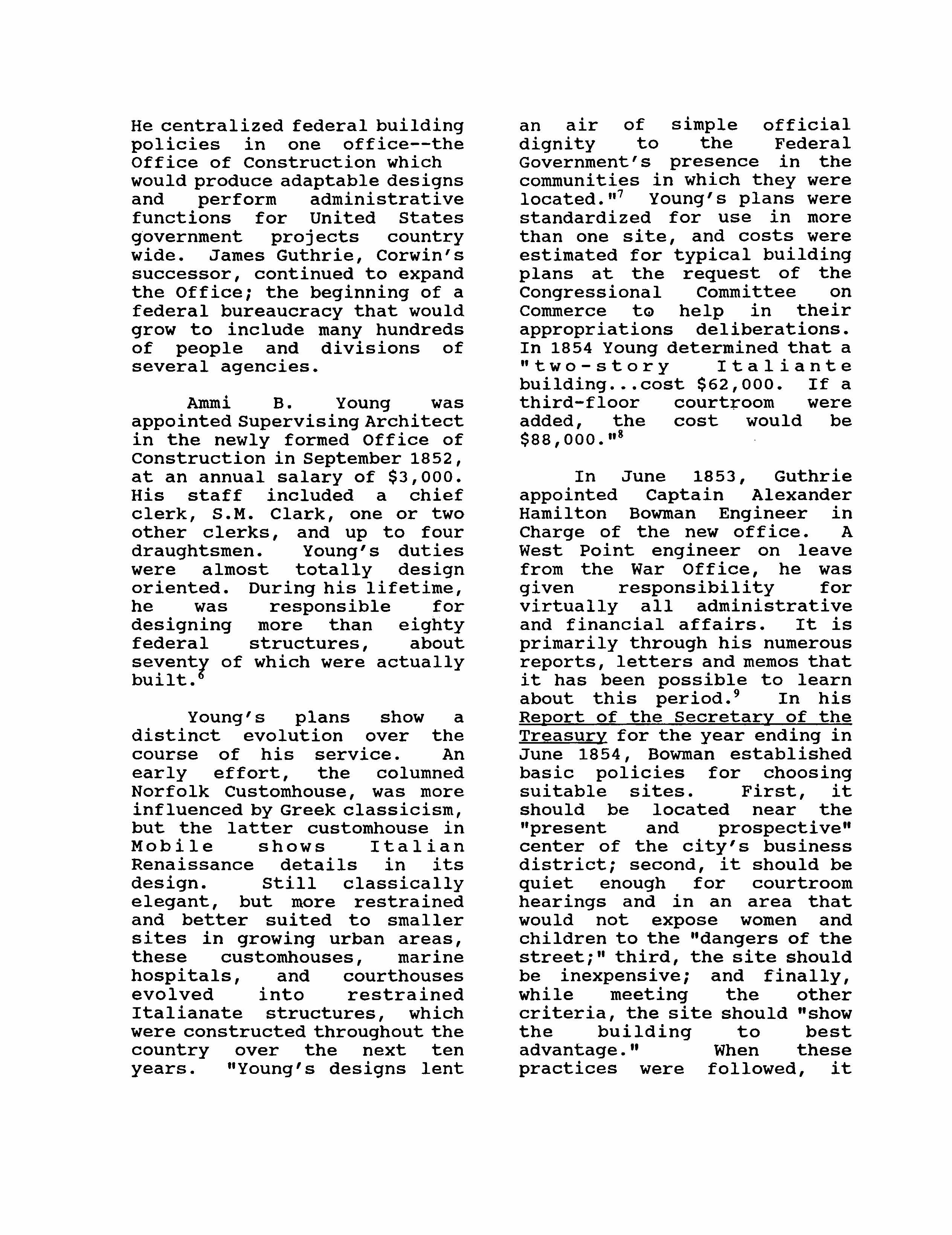

(Continued from Page 3)
He centralized federal building policies in one office—the Office of Construction which would produce adaptable designs and perform administrative functions for United States government projects country wide. James Guthrie, Corwin's successor, continued to expand the Office; the beginning of a federal bureaucracy that would grow to include many hundreds of people and divisions of several agencies.
Ammi B. Young was appointed Supervising Architect in the newly formed Office of Construction in September 1852, at an annual salary of $3,000. His staff included a chief clerk, S.M. Clark, one or two other clerks, and up to four draughtsmen. Young's duties were almost totally design oriented. During his lifetime, he was responsible for designing more than eighty federal structures, about seventy of which were actually built.
Young's plans show a distinct evolution over the course of his service. An early effort, the columned Norfolk Customhouse, was more influenced by Greek classicism, but the latter customhouse in Mobile shows Italian Renaissance details in its design. Still classically elegant, but more restrained and better suited to smaller sites in growing urban areas, these customhouses, marine hospitals, and courthouses evolved into restrained Italianate structures, which were constructed throughout the country over the next ten years. "Young's designs lent an air of simple official dignity to the Federal Government's presence in the communities in which they were located. Young's plans were standardized for use in more than one site, and costs were estimated for typical building plans at the request of the Congressional Committee on Commerce to help in their appropriations deliberations. In 1854 Young determined that a "two-story Italiante building ... cost $62,000. If a third-floor courtroom were added, the cost would be $88,000.
In June 1853, Guthrie appointed Captain Alexander Hamilton Bowman Engineer in Charge of the new office. A West Point engineer on leave from the War Office, he was given responsibility for virtually all administrative and financial affairs. It is primarily through his numerous reports, letters and memos that it has been possible to learn about this period. In his Report of the Secretary of the Treasury for the year ending in June 1854, Bowman established basic policies for choosing suitable sites. First, it should be located near the "present and prospective” center of the city's business district; second, it should be quiet enough for courtroom hearings and in an area that would not expose women and children to the "dangers of the street;" third, the site should be inexpensive; and finally, while meeting the other criteria, the site should "show the building to best advantage. When these practices were followed, it
(Continued on Page 5)
This site is sponsored by the Friends of the Old Naval Hospital
Last updated September 25, 2009